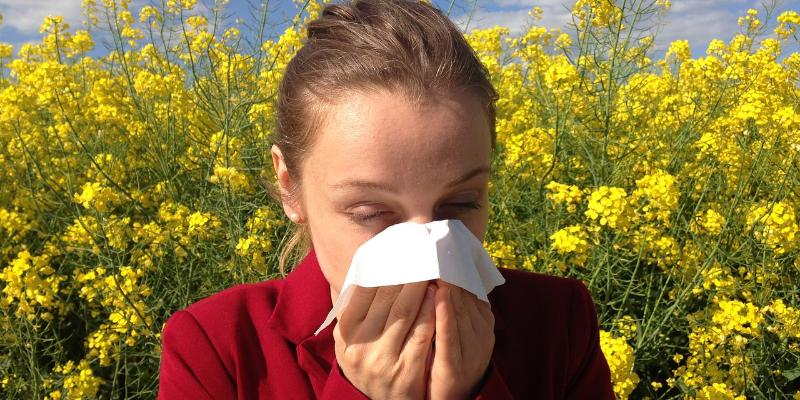The problem of allergies already concerns 40% of Poles, and the proportion is constantly increasing. Dr Piotr Dąbrowiecki, allergist, President of the Polish Federation of Asthma and Allergy and Chronic Obstructive Pulmonary Disease Patients Associations provides the definition of allergies and information on their diagnosis and treatment for the e-zdrowie portal.
Allergy is an abnormal immunological response for particles permeating a person’s system which do not invoke such reactions in most people. These are most often proteins which reach the respiratory system of the allergic person through the nose, causing a defensive reaction inadequate to the threat they pose.
These are neither viruses nor bacteria, but the immunological system interprets them as dangerous substances which should be fought against, so it launches an attack in the form of an inflammatory reaction. The allergic person will sneeze, draw tears, cough or have attacks of breathlessness – all this is to eliminate the aggressor.
Types of allergies
The simplest division is by types of allergens. It is possible to distinguish airborne allergies, where the allergens are tree and grass pollen, weeds, household dust saprophytes or mold spores.
Among the food allergens which are most often responsible for allergies in Poland are cow’s milk, hen’s eggs, fish, nuts, fruit and vegetables. Some people are oversensitive to metals (nickel, chrome) or aromatic allergens; these allergies are called contact allergies.
Diagnosing allergies
Skin tests are a standard diagnostic method for allergies. Drops of various allergens irritating the skin are spread on a person’s forearm, and in the case of small children on the back. If an allergic reaction appears in the given spot in the form of the so-called wheal response – an itching, red papule, it means that the patient is allergic to the specific substance.
Skin tests can be normally performed starting from the age of three. The most efficient results are achieved in airborne allergies – sensitivity and specificity reach 80-90%.
In the case of food allergies, the sensitivity of skin tests reaches up to 50%. Therefore, the challenge test is the basis for therapy. Therefore, the patient must first apply diet relieving from symptoms (including products which do not cause allergy), and later gradually introduce small doses of the analysed substance and observe the reaction.
Allergy can also be diagnosed through blood tests measuring the level of specific IgE antibodies, which are produced by the body of the allergic person and indicate an allergic reaction.
Treating allergies
The basic rule is to avoid the allergens which cause adverse reactions. In the case of food allergies avoiding allergens is quite simple, but in the case of airborne allergies it is not always possible. Thus, pharmacotherapy must be applied.
The basic anti-allergic medications are antihistamines. Another important medication is a steroid applied locally on the skin, the nasal cavity or inhaled, which, as dr Dąbrowiecki claims, should be used without concern, as it is safe, also for children, and enables the patients to live normal lives. Medications with a dilating effect on bronchial tubes and leukotriene antagonists can also be used for the treatment of allergies. People for whom allergies cause shocks should always have with them an ampule syringe with adrenaline.
Dr Dąbrowiecki claims that the most efficient method of treating allergies (especially airborne) is allergen immunotherapy, commonly referred to as desensitisation. It also prevents the patients from developing allergies for new substances. The therapy lasts from four to five years and, for the effects to set in, it should be repeated approx. two, three times in a person’s lifetime.
In order to minimise the risk, pregnant women should refrain from smoking tobacco and avoid eating too many products of one type. Breastfeeding of newborns is also recommended.









Comments (0)